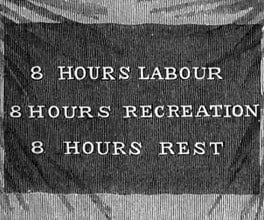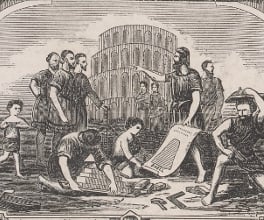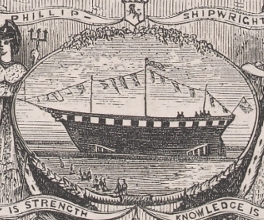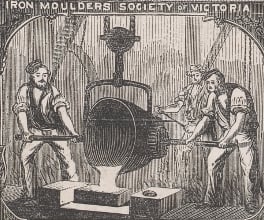Banners from the 8 Hours Procession
Learning intention
Students examine how the 8 hours movement led to workers developing a sense of their importance in society. This idea is explored through the detailed image study of trade union banners from the 8 Hours Procession.
Students will:
- Explore key events and ideas in the development of Australian self-government and democracy
- Process and synthesise information from a range of sources for use as evidence in an historical argument
Background
The original 8 Hours Procession on the 12 May 1856 to celebrate the establishment of an 8 hour working day for stonemasons. The march became a major event in Melbourne and was held annually for the next 95 years, becoming a paid public holiday in 1879. Unions and workers' guilds created large detailed banners to carry in the parades, showcasing their workers' skills.
You can find background information for students in the Workers rights section of Explore history and the Select resources section of Learn skills.
Resources
Primary sources on ergo:
- Trade union banner, illustrated newspaper detail
- Banner for the Bricklayers Union, illustrated newspaper detail
- Banner for the Port Phillip Shipwrights Society, illustrated newspaper detail
- Banner for the Iron Moulders Society of Victoria, illustrated newspaper detail
Single image study - student template [Word 11.88 KB]
Comparing images - student template [Word 15.39 KB]
Activity
Look at the images detailed above in small groups or as individuals using an image study template. Use questions below to guide discussion:
- Why do you think workers wanted to compare themselves to classical figures from the past?
- Who do you think was the audience for these banners? Who were they created for?
- Who made these banners and how do you think they were made?
- Although none of the banners here represent women, can you think of any female trades that might have been involved?
- Do these trades still exist today? How have unions changed?
- Does the Labour day parade still happen in Melbourne today? How has it changed?








